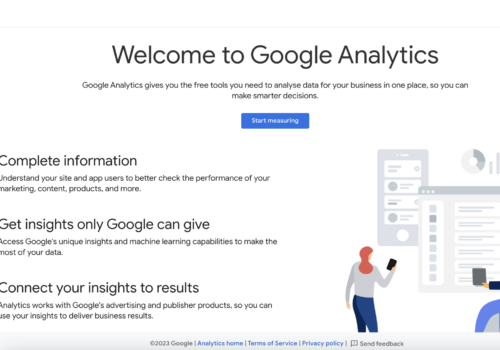There is a lot of buzz around the words “AI” and “machine learning.” But what do they actually mean? And what’s the difference between them?
Artificial intelligence (AI) and machine learning are often used interchangeably, but they have distinct differences.
AI refers to the ability of machines to imitate human intelligence, while machine learning is a subset of AI that enables machines to learn and improve their performance over time by analyzing data.
Although both technologies are often used together, machine learning focuses more on the ability of machines to learn from data without being explicitly programmed.
As businesses continue to embrace AI, it is important to understand the differences between these two technologies and how they can be used to improve business operations.
Let’s find out the Difference Between Artificial Intelligence (AI) and Machine Learning in detail.
What is Machine Learning?
Machine learning is a field of artificial intelligence that deals with the design and development of algorithms that can learn from and make predictions on data.
The goal of Machine learning is to automate predictive modelling so that better decisions can be made faster.
Machine learning algorithms are used in a variety of applications, such as email filtering, detection of network intruders, and computer vision.
Machine learning is a relatively new field that has been growing exponentially in recent years. The reason for this growth is that machine learning algorithms have been able to achieve impressive results in many different fields.
There are two main types of machine learning: supervised and unsupervised. Supervised learning algorithms use training data to learn a model that can then be used to make predictions on new data.
Unsupervised learning algorithms do not use training data; instead, they learn from the data itself to find patterns or groups.
Machine learning is a powerful tool that can be used to solve many real-world problems.
However, it is important to remember that machine learning is a subfield of AI, and as such, it is still in its early stages of development.
Many challenges need to be addressed before machine learning can be truly considered a mature field. Nevertheless, its potential is immense, and it is sure to have a major impact on many areas in the years to come.
What is Artificial Intelligence?
Artificial intelligence (AI) is a term that refers to the ability of a computer or machine to learn and perform tasks that would normally require human intelligence, such as reasoning, natural communication, and problem-solving.
AI technology has come a long way in recent years, thanks to advances in fields such as machine learning and big data.
Today, AI is being used in a variety of ways, from helping humans make better decisions to autonomously carrying out tasks.
There Are Various Types of AI, With Some Common Examples Including:
1. Machine Learning:
This is a method of teaching computers to learn from data without being explicitly programmed.
2. Natural Language Processing (NLP):
This is the ability of a computer to understand human language and respond in a way that is natural for humans.
3. Robotics:
This involves the use of robots to carry out tasks that would normally be done by humans.
4. Predictive Analytics:
This is a method of using data to make predictions about future events, trends, and behaviours.
AI technology is constantly evolving, and new applications for it are being found constantly. With the continued advancement of AI, even more amazing and life-changing innovations will likely be made in the years to come.
Artificial intelligence (AI) is a branch of computer science that deals with the creation of intelligent agents, which are systems that can reason, learn, and act autonomously.
AI research deals with the question of how to create computers that are capable of intelligent behaviour. In order to answer this question, AI researchers have developed a number of approaches, including behavioural, symbolic, and statistical.
AI technology has been used in a variety of ways, including expert systems, natural language processing, intelligent agents, and machine learning.
The term “artificial intelligence” is often used to refer to a specific subfield of AI, which deals with the creation of intelligent agents.
However, AI can also refer to the overall field of AI research. AI technology has been used in various ways, including expert systems, natural language processing, intelligent agents, and machine learning.
Expert systems are computer programs designed to solve problems in a specific domain, such as medicine or engineering. They use a combination of rule-based reasoning and heuristic search to solve problems.
Natural language processing is a subfield of AI that deals with the question of how to get computers to understand human language.
NLP research deals with the question of how to create computer systems that can automatically process and understand natural language input
Difference Between Machine Learning and Artificial Intelligence
| Aspect | Machine Learning | Artificial Intelligence |
|---|---|---|
| Scope | A subset of AI focuses on the ability of machines to learn from data without explicit programming. | A broader concept that includes making computers smarter through various methods, including machine learning. |
| Main Focus | Prediction based on patterns in data. | Both prediction and decision-making, using patterns in data for reasoning and planning. |
| Application in Data | Analyzing data to convert it into knowledge. | Beyond analyzing, AI is used for knowledge representation, reasoning, planning, and problem-solving. |
| Learning Type | Mainly used for supervised learning, where data is labelled for the algorithm to learn. | Utilizes both supervised (labelled data) and unsupervised learning (finding data structure without labels). |
| Tasks | Primarily focused on regression and classification tasks. | Encompasses regression, classification, prediction, planning, decision-making, and more. |
Pros and Cons of Machine Learning
Pros
- Machine learning can automate repetitive learning and classification tasks, freeing up time for humans to focus on other tasks.
- Machine learning can make sense of large amounts of data that are too complex for humans to process, helping us gain new insights and understanding.
Cons
- Machine learning algorithms are often opaque in their decision-making, making it difficult to understand why a particular decision was made.
- Machine learning can be biased if the data used to train the algorithm is itself biased.
Pros and Cons of Artificial Intelligence
Pros
- Artificial intelligence can help us process and make sense of vast amounts of data more efficiently than humans can.
- Artificial intelligence can identify patterns and insights that humans might miss.
Cons
- One of the major cons of artificial intelligence is the potential for abuse and misuse.
- Artificial intelligence technology could be used to create powerful weapons that could potentially be used against humanity.
FAQs
🔍 How do AI and Machine Learning differ?
The main difference lies in their scope and capabilities. AI is the broader concept of machines being able to carry out tasks in a way that we consider smart. Machine Learning is a specific application of AI that teaches machines to learn from data, making AI accessible and functional.
📊 Can Machine Learning exist without AI?
No, Machine Learning is a subset of AI and relies on the principles of AI to function. It cannot exist independently of AI because it is defined by its ability to learn from data, a concept that stems directly from artificial intelligence.
🤔 Is Machine Learning better than AI, or is it the other way around?
It's not about one being better than the other; they serve different purposes. AI is the overarching goal of creating intelligent machines, while Machine Learning provides a methodology for achieving that intelligence through data-driven learning.
💡 What are some real-world applications of AI and Machine Learning?
AI and Machine Learning have numerous applications, including speech recognition, autonomous vehicles, personalized recommendations, healthcare diagnostics, and financial fraud detection, showcasing their versatility and impact across different sectors.
🛠 What tools are used in AI and Machine Learning?
Popular tools include programming languages like Python and R, frameworks like TensorFlow and PyTorch for building and training models, and platforms like Google Cloud AI and Amazon SageMaker for deploying AI solutions.
🌐 Where can I see AI and Machine Learning in action today?
AI and Machine Learning are everywhere: from virtual assistants like Siri and Alexa, recommendation systems on Netflix and Amazon, to spam filters in your email. They're behind many technologies you use daily, often working in the background to improve your experience.
Quick Links:
- The Future Of AI: What Artificial Intelligence Will Bring In Future?
- How Artificial Intelligence Is Transforming Business? How Can AI Improve Business?
- Powerful Examples of Artificial Intelligence
- Where is Artificial Intelligence Used Today?
Conclusion: Difference Between AI and Machine Learning In 2025
Although there is some overlap between AI and machine learning, they are two distinct concepts. AI is a broader term that refers to any system that can learn and make decisions on its own.
Machine learning, on the other hand, is a type of AI that relies on data-driven feedback loops to improve its performance over time.
Both of these technologies are rapidly evolving, so marketers need to stay up-to-date on the latest developments.
In terms of application, AI can be used in a number of ways, including content creation, customer service, and lead generation.
Machine learning is particularly well-suited for tasks such as predictive analytics and personalization.








